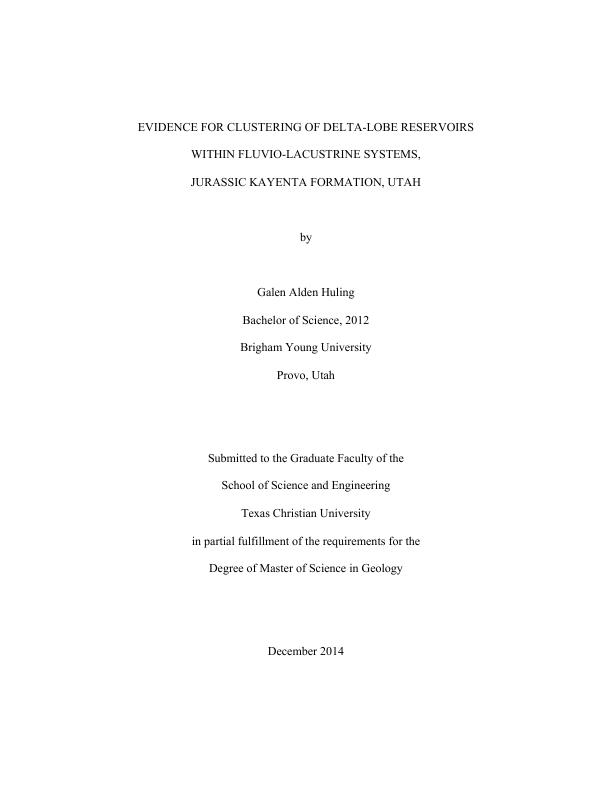Evidence for clustering of delta-lobe reservoirs within fluvio-lacustrine systems, Jurassic Kayenta Formation, UtahShow full item record
| Title | Evidence for clustering of delta-lobe reservoirs within fluvio-lacustrine systems, Jurassic Kayenta Formation, Utah |
|---|---|
| Author | Huling, Galen Alden |
| Date | 2014 |
| Genre | Thesis |
| Degree | Master of Science |
| Abstract | Spatial relationship of fluvial bodies within the Kayenta Formation, Warner Valley, UT, show lateral and vertical clustering of delta-lobe sand bodies within a matrix of fine-grained open-lake deposits. Clustering due to non-random stream avulsion is well documented for high-accommodation fluvial systems operating in alluvial plains, but not well established broadly for lacustrine systems with abundant fluvio-deltaic lobes. Kayenta Formation delta-lobes have similar spatial clustering to those observed in fluvial channel belts, and possibly extend this clustering concept to shallow lacustrine systems. Lithofacies were mapped on three large photo panoramas and architectural-element analysis was used to identify bounding surfaces of fluvial channels and deltaic lobes. Clustering of fluvial bodies within shallow lakes is significant in predictive reservoir models because it improves connectivity and localization of delta-lobe reservoirs. The clustering of delta lobes in fluvio-lacustrine systems is theorized to be a basin-ward projection of preferential avulsion fairways observed in fluvial systems. |
| Link | https://repository.tcu.edu/handle/116099117/7166 |
| Department | Geological Sciences |
| Advisor | Holbrook, John M. |
Files in this item
This item appears in the following Collection(s)
- Masters Theses [4182]
© TCU Library 2015 | Contact Special Collections |
HTML Sitemap



